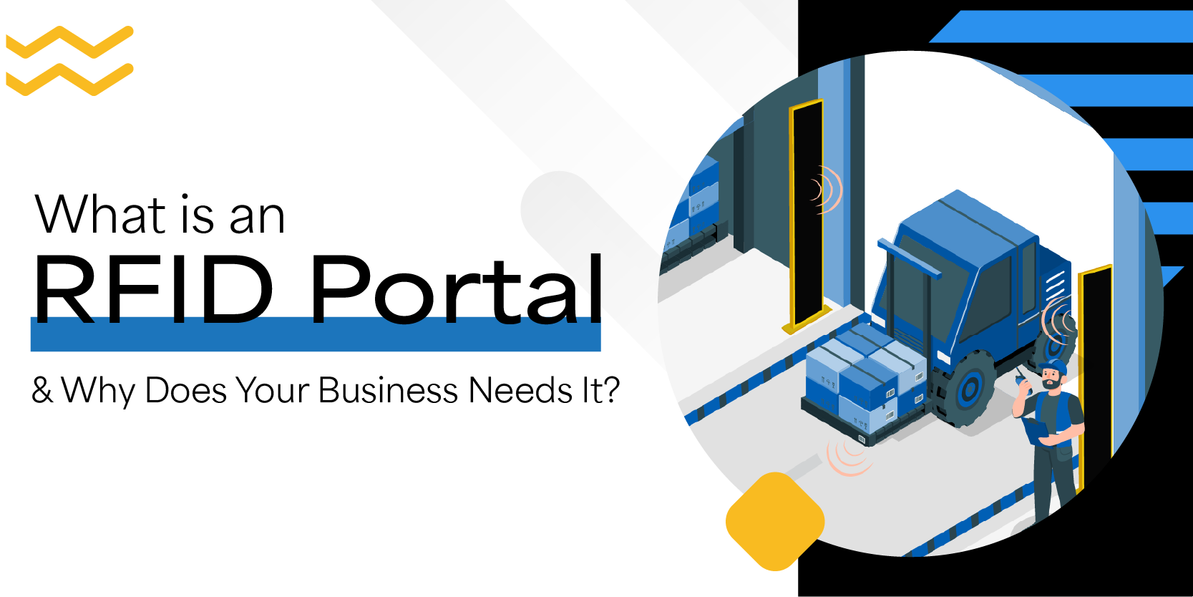What Is an RFID Portal and Why Does Your Business Need It?
In today’s fast-paced business environment, losing track of inventory or assets can cost you time, money, and customers. Yet surprisingly, many companies still rely on manual processes like spreadsheets or barcode scanning. These methods are not only outdated but also prone to human error.
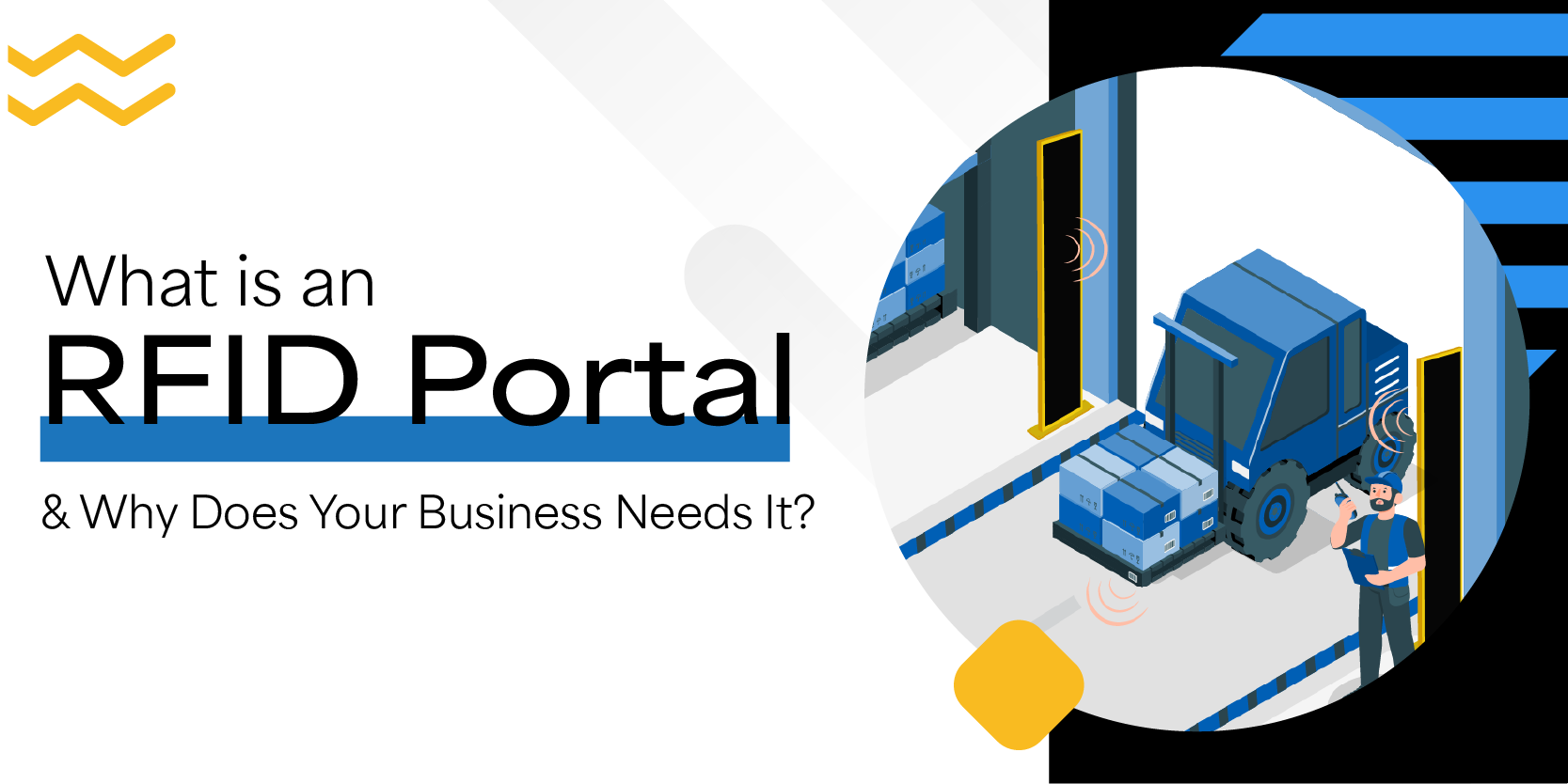
That’s where RFID technology comes in. By utilising radio waves to identify and track items, RFID enhances automation, speed, and accuracy in your operations.
And one of the most powerful tools within the RFID ecosystem? The RFID portal.
In this blog, we’ll break down what RFID portals are, how they work, and why they’re a game-changer for businesses looking to optimize their processes and stay competitive.
What Is an RFID Portal?
An RFID portal is a fixed RFID system placed at strategic points, such as warehouse entrances, loading docks, or production lines, to automatically scan RFID tags as items pass through.
Key Components of an RFID Portal:
- RFID Readers: The brains of the system that read tag data.
- Antennas: These send and receive radio signals from RFID tags.
- Physical Structure: This could be a gate, frame, wall-mount, or ceiling-mount, depending on your environment and application.
Types of RFID Portals:
1. Dock Door Portals
Installed at loading docks or warehouse entrances to automatically track items moving in or out, enabling real-time inventory updates and improved shipment accuracy.
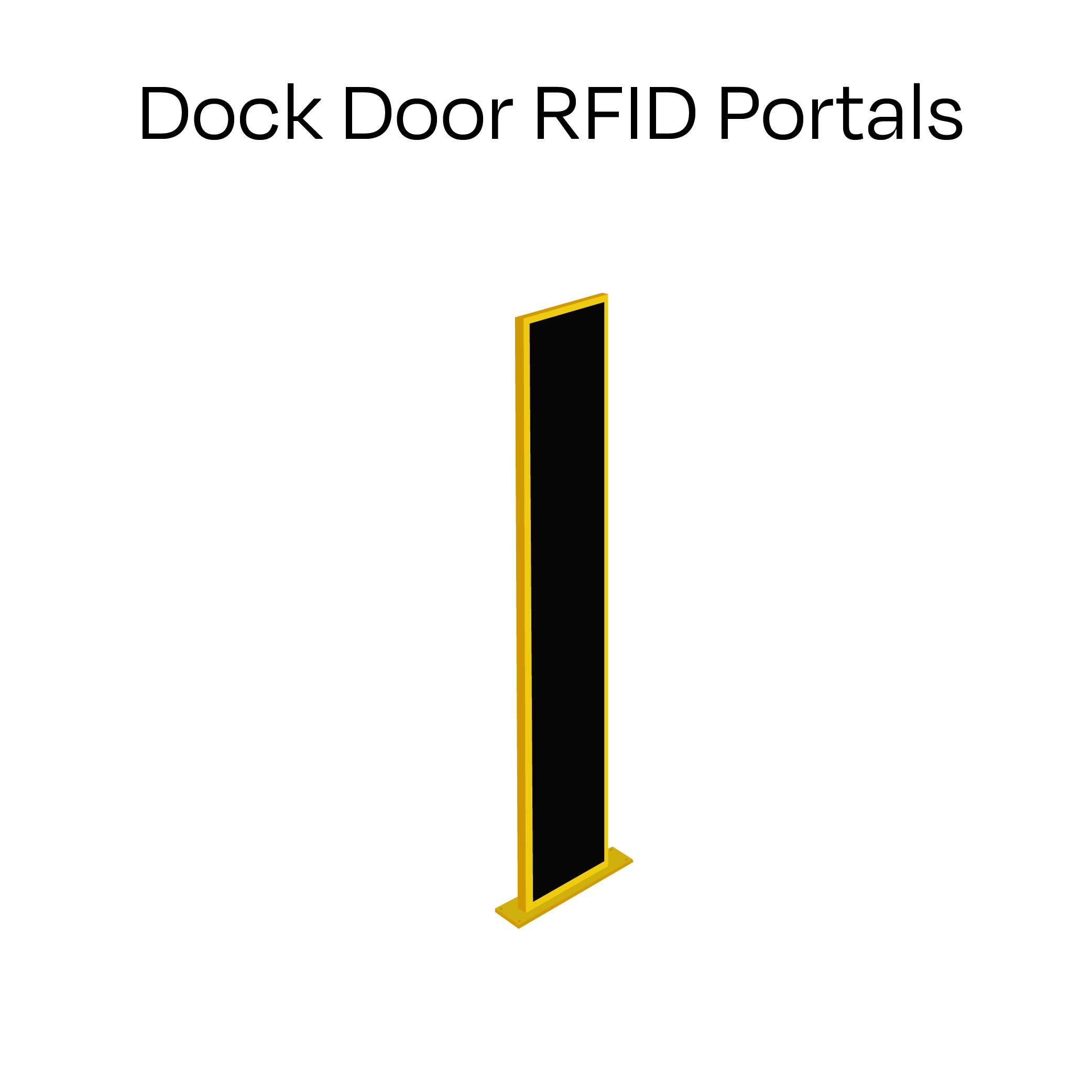
2. Conveyor Belt Portals
Mounted along conveyors to monitor tagged items as they move through production or packaging lines, ensuring accurate tracking of goods in fast-moving operations.
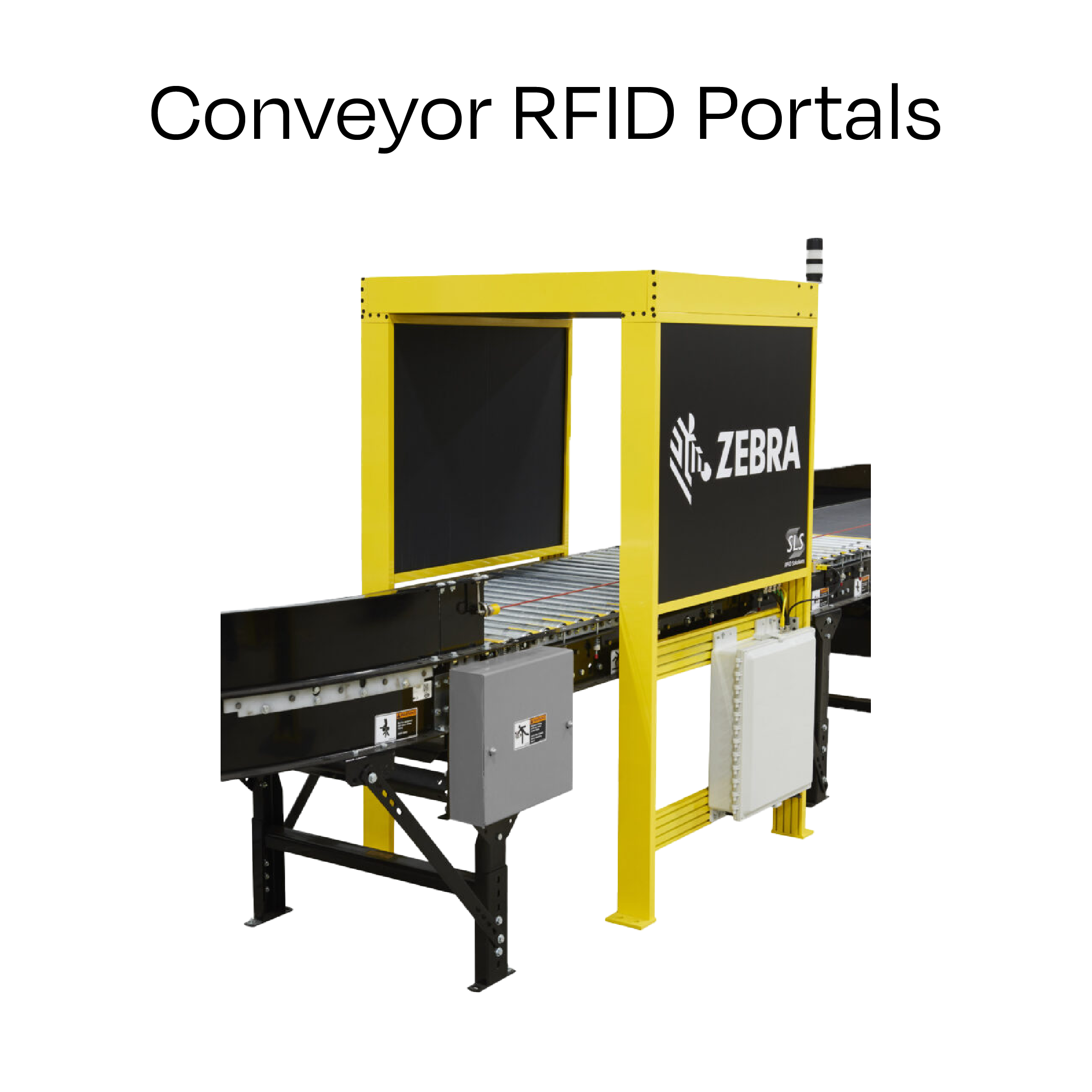
3. Wall-Mounted Portals
Space-saving solutions are ideal for narrow aisles or busy zones, offering effective item tracking without obstructing movement or floor space.
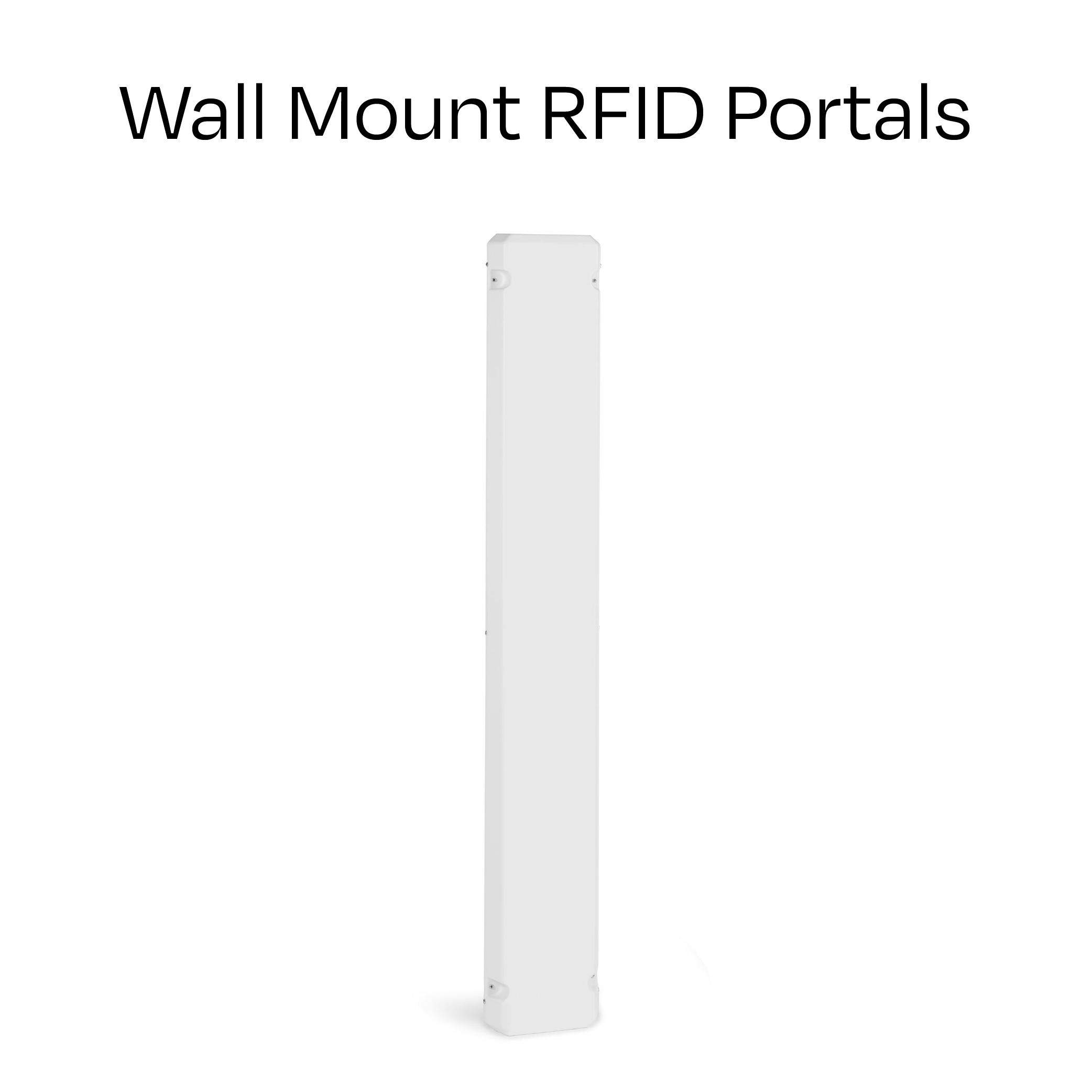
4. Integrated Transition RFID Portals
Designed for transitional zones like doorways or hallways, these portals offer seamless tracking as items or people move between rooms, areas, or departments.
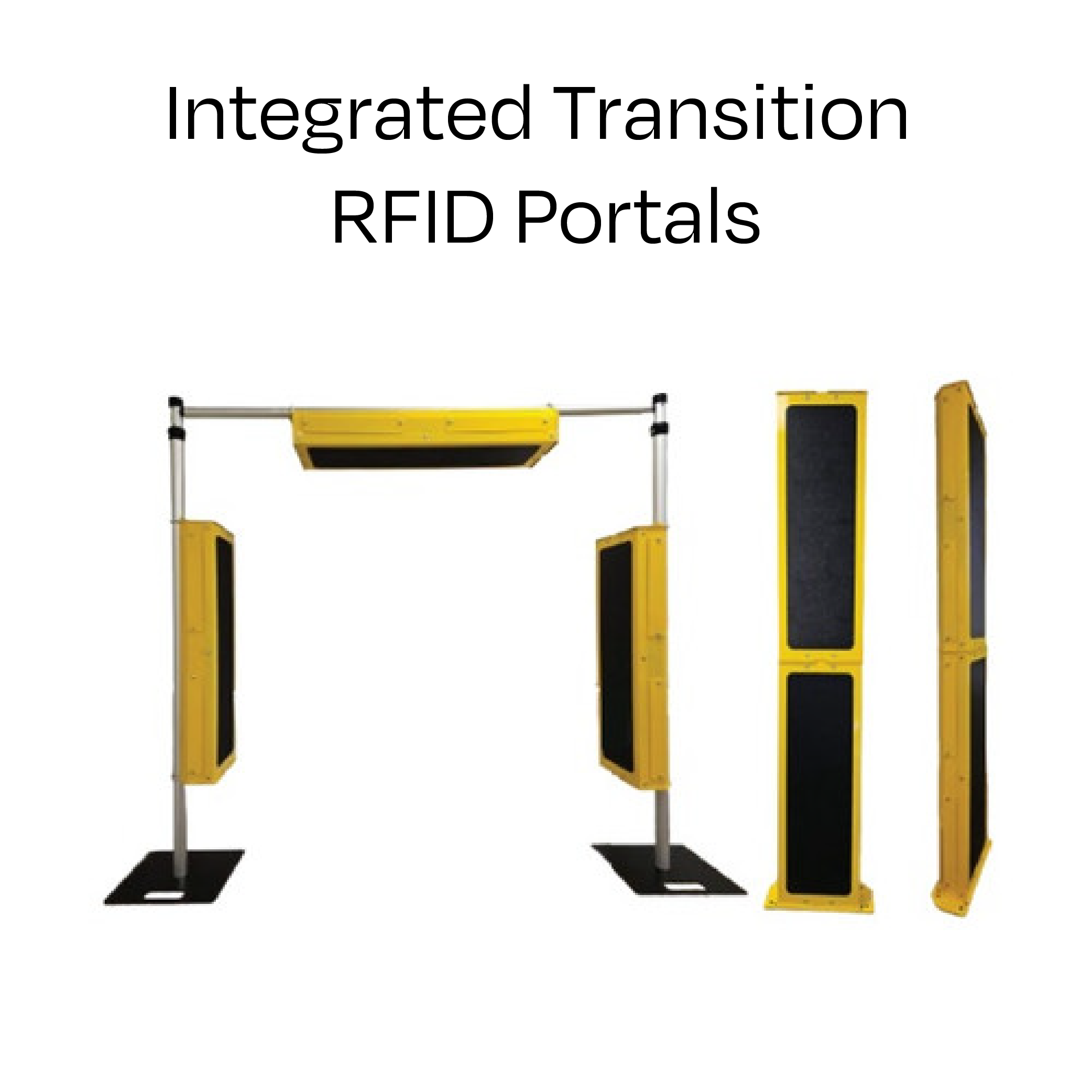
Common Use Cases:
RFID portals are commonly used to track inventory moving in and out of warehouses, enabling real-time asset monitoring and automated inventory updates with high accuracy. Acting as intelligent checkpoints, they provide full visibility into asset movement without requiring manual scanning, making operations faster, more efficient, and error-free.
How Does an RFID Portal Work?
RFID portals automatically detect and read RFID tags as tagged items move through a designated read zone, eliminating the need for manual scanning or human intervention.
Step-by-Step Process
RFID Tags Pass Through: Items with passive UHF RFID tags pass through the portal, entering a detection zone where they can be read automatically without stopping or slowing down.
Reading is triggered: The system begins reading when motion sensors, beam breaks, or continuous scanning detect activity in the read zone, ensuring timely and accurate tag capture.
Data Is Captured: The RFID reader quickly captures data from each tag, such as item ID, timestamp, and location, without requiring physical contact or line-of-sight.
System Updates Automatically: Captured data is instantly transmitted to your inventory, asset tracking, or ERP software, keeping records up to date in real-time for smarter decisions.
Factors That Affect Accuracy
Tag Orientation: The angle and placement of the RFID tag matter—tags must face the antennas correctly to ensure reliable and consistent reads.
Read Range & Interference: Environmental factors like metal surfaces, liquids, or electronic noise can interfere with signals and reduce read accuracy, requiring careful setup and testing.
Portal Design: Well-designed portals with optimal antenna placement ensure full coverage, strong signal strength, and accurate reads for items of different shapes and sizes.
Benefits of Using an RFID Portal
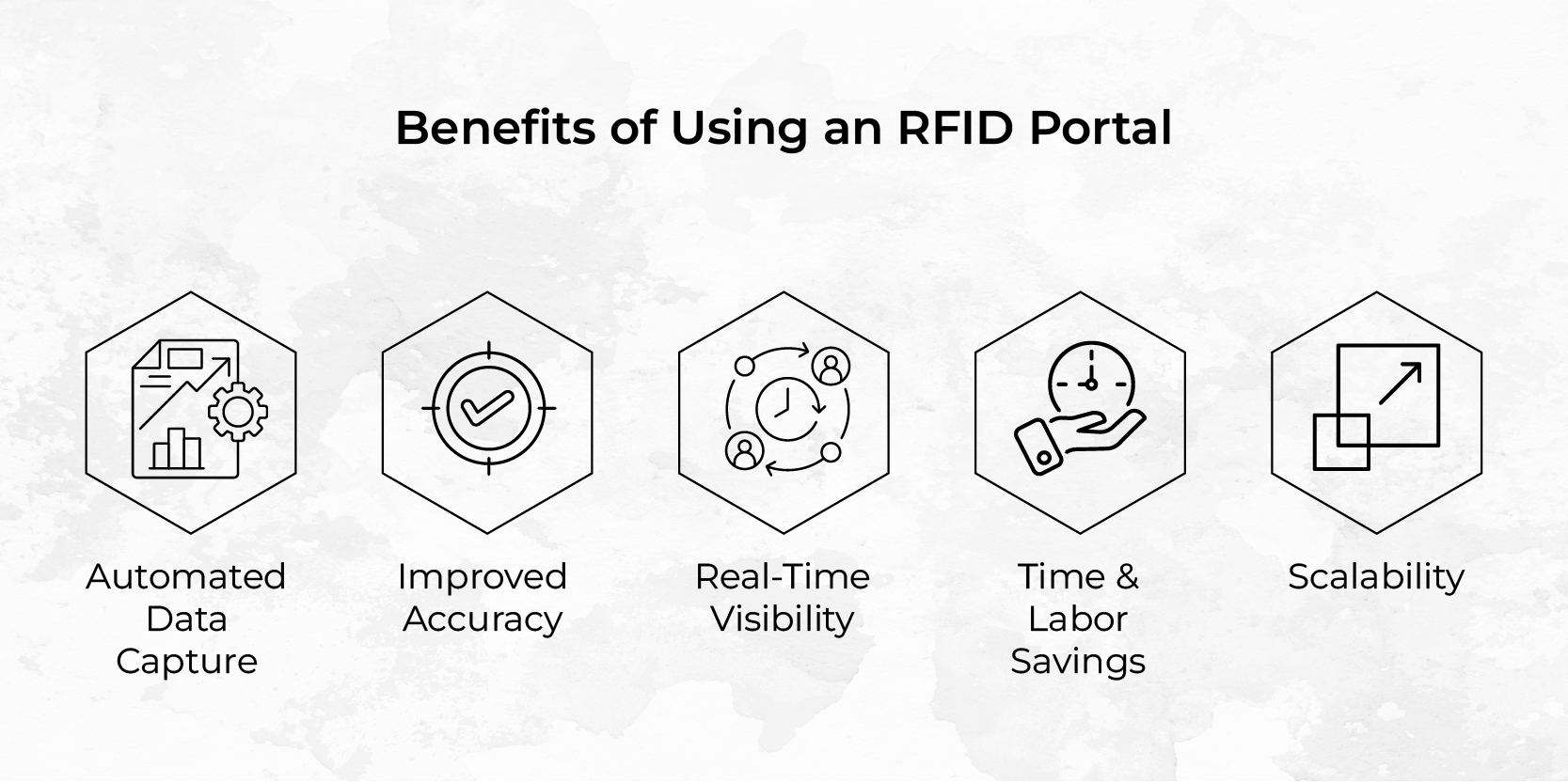
Automated Data Capture
RFID portals eliminate the need for manual barcode scanning by automatically detecting and recording data as items pass through. This ensures faster operations and reduces dependency on human intervention.
Improved Accuracy
By removing manual data entry, RFID portals significantly reduce human errors, resulting in more accurate inventory counts, fewer discrepancies, and improved trust in your data across operations.
Real-Time Visibility
RFID portals provide instant updates as inventory or assets move in or out, giving your team real-time insights and helping you make faster, more informed business decisions without second-guessing.
Time & Labor Savings
Automated scanning means your staff no longer spends hours manually tracking or counting items. RFID portals handle the process continuously, freeing up time and reducing labor costs.
Scalability
RFID portals can be easily deployed across multiple locations, warehouses, or checkpoints. This makes it simple to scale your system as your business grows or your needs expand.
Industries That Benefit from RFID Portals
RFID portals are incredibly versatile and offer value across a wide range of industries:
Retail
RFID portals help retailers track inventory as it enters storage areas or the sales floor. Exit portals reduce theft by detecting unscanned items. They also simplify restocking by providing real-time stock levels, reducing out-of-stock situations and improving the shopping experience.
Manufacturing
In manufacturing, RFID portals monitor work-in-progress (WIP) as items move between production stages. They help track real-time usage of components and raw materials, ensuring better process visibility, improved quality control, and reduced downtime due to missing parts or inventory gaps.
Healthcare
Hospitals and healthcare facilities use RFID portals to track critical medical equipment, surgical tools, and high-value assets. They also ensure sterile supplies are available and monitored, reducing the risk of shortages or contamination, and improving patient care and operational efficiency.
Logistics & Warehousing
RFID portals at loading docks streamline inbound and outbound shipment verification by automatically scanning items. They enable real-time tracking, support cross-docking processes, and reduce check-in/check-out times, boosting accuracy, speed, and efficiency across warehouse and logistics operations.
Aerospace & Defense
RFID portals in the aerospace and defence sectors ensure every part or component is tracked with precision. This supports strict compliance with industry regulations, reduces loss of sensitive assets, and enhances overall supply chain transparency and security across facilities.
Why Your Business Needs It Now
RFID portals are not just a “nice-to-have” — they’re a competitive edge.
Here’s why:
- Early Adopters Are Ahead: Businesses already using RFID portals enjoy faster operations and reduced costs.
- Complex Supply Chains Need Automation: Manual systems can’t keep up with today’s global and fast-moving logistics.
- Easy Integration: RFID portals can plug into your existing cloud-based inventory or asset management systems.
- Strong ROI: The initial investment pays off in labor savings, fewer errors, better visibility, and improved customer satisfaction.
Conclusion
RFID portals are a smart, scalable solution for automating how your business tracks assets, inventory, and equipment. With real-time visibility, hands-free data capture, and enhanced accuracy, these systems transform your operations from reactive to proactive.
If you're ready to eliminate inefficiencies and stay ahead of the curve, it's time to explore RFID portals.
Recent Posts
-
The Use Cases of RFID in Healthcare: Enhancing Efficiency, Safety, and Patient Care
Introduction In the modern medical landscape, healthcare providers continually seek ways to enhance …Jun 19th 2025 -
Zebra Handheld RFID Readers Comparison: MC3330xR, MC3390xR, RFD40 Series, RFD9090, & RFD9030
Introduction Zebra Technologies stands as a global leader in enterprise asset intelligence, offering …Jun 13th 2025 -
What Is an RFID Portal and Why Does Your Business Need It?
In today’s fast-paced business environment, losing track of inventory or assets can cost you t …Jun 9th 2025

